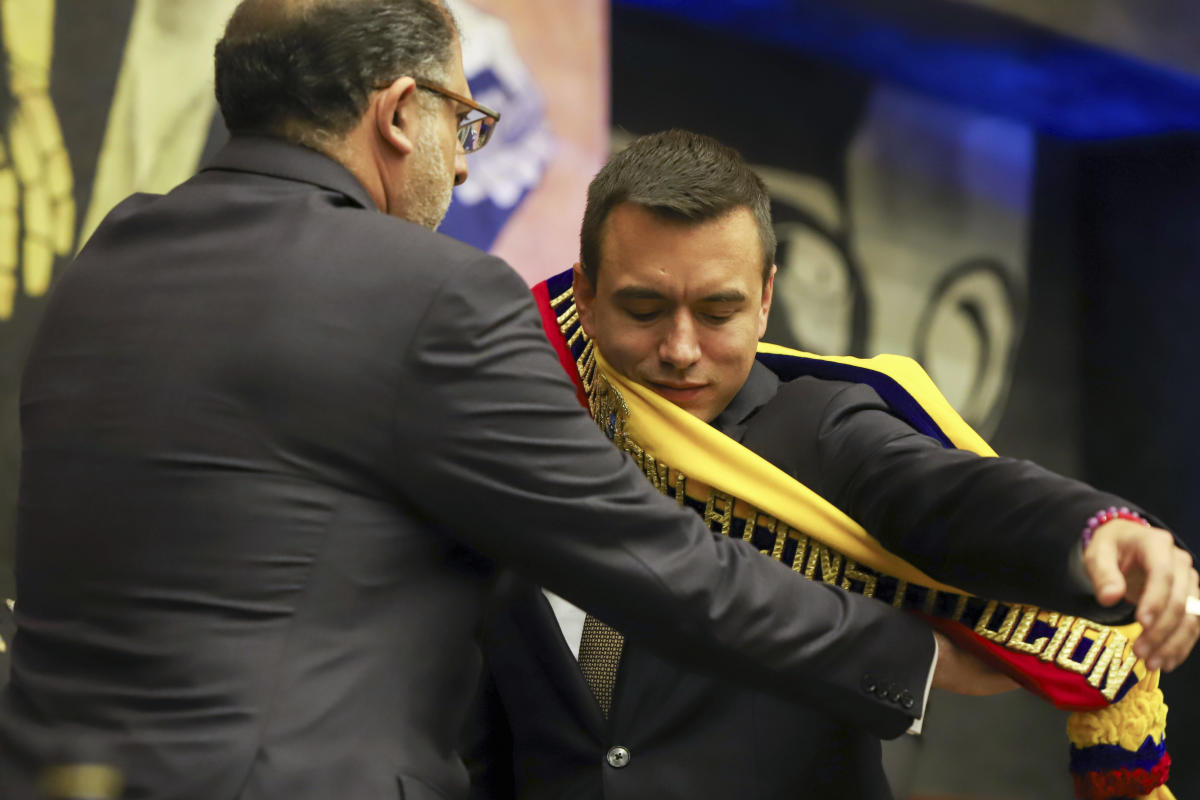129 Days: How an Israeli hostage in Gaza tells the story of enduring captivity

Luis Har, who was seen in Tel Aviv, Israel, on March 27, was held hostage in a Hamas attack on October 7 and released in February by an Israeli special forces operation. While in captivity, he said: “Every time we fell into depression, we overcame it with stories. We started asking, where are we going today?
NPR’s Tamir Khalifa
hide title
Switch title
NPR’s Tamir Khalifa

Luis Har, who was seen in Tel Aviv, Israel, on March 27, was held hostage in a Hamas attack on October 7 and released in February by an Israeli special forces operation. While in captivity, he said: “Every time we fell into depression, we overcame it with stories. We started asking, where are we going today?
NPR’s Tamir Khalifa
TEL AVIV — Every night at dark, before the guards turn on the lights, Israeli hostage Louis Hall tells a story to his fellow prisoners.
“I have a wealth of stories from my past,” said Hal, 71, “and it helps us pass the time.”
Hal, an accountant, dancer and actor, spent 129 days in captivity in southern Gaza, telling stories and traveling in his imagination. On February 12, a dramatic Israeli commando raid rescued him and another hostage—the final rescue. Israeli hostages in Gaza released.
Hamas launched an attack on southern Israel on October 7, killing more than 1,200 people and taking 250 hostages, according to the Israeli government. About half of the hostages were released in a November ceasefire. There are more than 130 people left. Presumably many of them are still alive.
In an interview with NPR at the headquarters of the leading advocacy group representing the families of Israeli hostages in Gaza, Haar revealed personal details of his captivity, his thoughts on the rescue operation and why Israel does not want to conduct a military strike to free the hostages. The remaining hosts are from Gaza.
capture
When Hamas rockets began flying from Gaza to Israel on October 7, Hal and his family didn’t seem surprised.
He is from Argentina and lives on a kibbutz near the Gaza border. On October 7, he was with his partner, her brother, sister and niece. As the rocket attacks intensified, they turned on their televisions and watched reports of Hamas attackers entering the town and nearby kibbutz communities.
“We all gathered in the safe room and we said we would get out in a few minutes,” he said. “We heard knocks on the door and the windows were broken. Suddenly, we heard Arabic. They broke into the house. ” . . We were completely shocked. “

Israeli hostages Luis Har and Fernando Simon Marman during the October 7 Hamas-led attack on Israeli Kibbutz Nir Yitzhak was kidnapped. Maman and Hal were released during a special forces operation in Gazarafa, February 12, the same day this photo was taken.
Dylan Martinez/Reuters
hide title
Switch title
Dylan Martinez/Reuters

Israeli hostages Luis Har and Fernando Simon Marman during the October 7 Hamas-led attack on Israeli Kibbutz Nir Yitzhak was kidnapped. Maman and Hal were released during a special forces operation in Gazarafa, February 12, the same day this photo was taken.
Dylan Martinez/Reuters
captivity
Armed men forced the five of them into the back of a pickup truck and made them sit on a pile of weapons. They were driven away and walked through the tunnels for several hours. Then they climbed the ladder into daylight in Gaza.
Hal said they were moved from home to home and eventually taken to an apartment where they were all locked in a room. Four armed men guarded them. His partner’s 17-year-old niece brought her Shih Tzu Bella.
“In the beginning, they were always skeptical, with weapons, and they would yell. We ignored that,” Hal recalled.
Hall said the guards did not physically harass anyone, but the 17-year-old girl was the one the captors feared most.
“One of the guards stared at her and kept telling the girl that he wanted to marry her,” he recalled. “We asked her to turn around and pretend to be sleeping. She was very nervous and stressed and cried several times.” “Several times, Quietly so they couldn’t hear. We tried to calm her down. We didn’t say it out loud, but inside each of us was worried.”
story
The five captives did not have radios or televisions, and their captors would tell them every detail of the war, such as when the Israeli army accidentally killed three other hostages. It’s true, but they don’t know if they should believe what they’re saying. be told.
Every night, when it gets dark and the guards turn on the lights, the prisoners have a ritual: the niece of Hal’s partner will ask him to tell a story. He was a folk dancer, so he would talk about dance. He performs in musicals where he uses his experience to try his best to make the people he loves happy.
“One time, we were at a show. One of the girls lifted her leg and her shoe flew off her foot. It happened like this in the air, boom, and landed on the audience. We Laughing,” he said. “Stories like this are usually fun things to do to pass the time.”
bid farewell
Hal’s partner, her sister and niece, and dog Bella were released 53 days later as part of a ceasefire and hostage agreement in November. Hal was delighted that his family in Israel learned that he was still alive. He and his family were told by their kidnappers, their partner’s brother, Fernando Simon Marman, that they would also be released in a few days. Then the ceasefire was broken.
“It was 7 o’clock on Friday morning. All of a sudden we heard an explosion. We understood, that was it. We were not leaving,” he said.
“Every time we get into a blues, we use stories to overcome it. We start saying, where are we going today? So today we are in Argentina. We are doing this, we are doing that.”
rescue
On February 12, 129 days after being imprisoned, Hal and Maman were awakened by a huge explosion in the middle of the night. Hal believed that the Israeli army (Israel Defense Forces) was bombing the building they were in.
“Someone grabbed my leg. He called my name – Louis. He said, IDF, IDF. We are here to take you home.”
During the rescue operation, the Israeli army carried out a large-scale air strike on Rafah to provide cover for the special forces, killing more than 70 Palestinian men, women and children. killed More than 33,000 Palestinians have been killed in these attacks since the war began, According to Gaza health officials.
Asked about Palestinians killed in rescue operations, Haar said: “I don’t know. It’s none of my business. The military can answer you. Most of the people I saw there were Hamas.” They’re not going to do it.” Pamper us, love us, and I have no mercy for them at this moment. “

A poster in Tel Aviv, Israel, with the word “Rescued” and a heart, shows Israeli hostage Luis Har, who was freed during a special forces operation in Gazarafa on February 12 .
Suzanne Vera/Reuters
hide title
Switch title
Suzanne Vera/Reuters

A poster in Tel Aviv, Israel, with the word “Rescued” and a heart, shows Israeli hostage Luis Har, who was freed during a special forces operation in Gazarafa on February 12 .
Suzanne Vera/Reuters
aftermath
To cope with life after captivity, Hal is working with a psychologist, who advises him not to return to the kibbutz on the Gaza border just yet. He and his partner were temporarily staying in a hotel.
What gives him strength is returning to what he loves: dancing folkloric dances with a dance company.
Haar said the only way Israel could free the remaining hostages was not through rescue raids – which he said would endanger soldiers and captives – but by negotiating a deal with Hamas to exchange Israeli captives for Palestinian prisoners. These include people convicted of killing Israelis.
“An exchange,” Hal said, “our people for the killers. Because even if they are the killers, the most important thing is to get all the hostages back home. They need to be treated here.”






